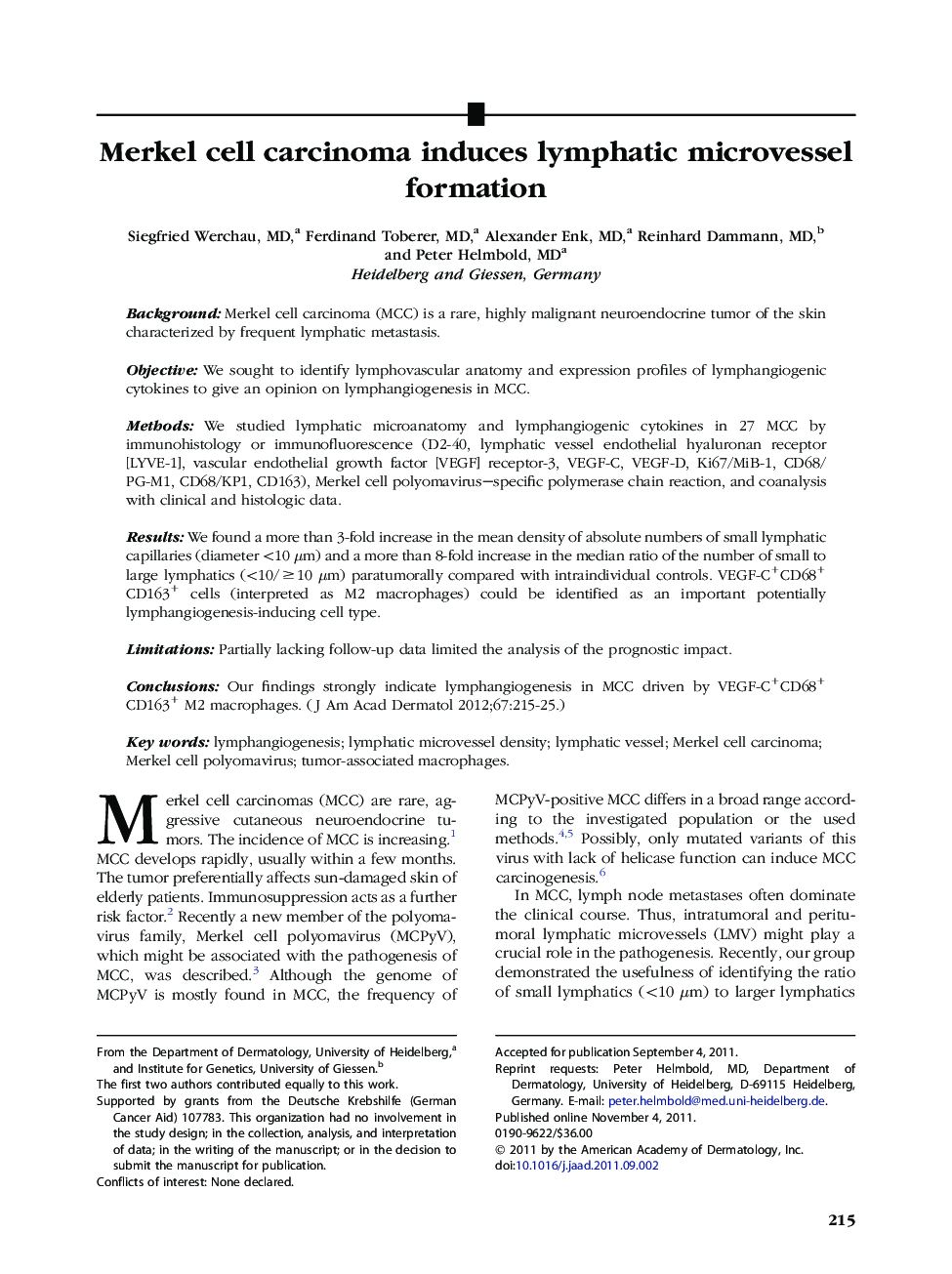| Article ID | Journal | Published Year | Pages | File Type |
|---|---|---|---|---|
| 3205783 | Journal of the American Academy of Dermatology | 2012 | 11 Pages |
BackgroundMerkel cell carcinoma (MCC) is a rare, highly malignant neuroendocrine tumor of the skin characterized by frequent lymphatic metastasis.ObjectiveWe sought to identify lymphovascular anatomy and expression profiles of lymphangiogenic cytokines to give an opinion on lymphangiogenesis in MCC.MethodsWe studied lymphatic microanatomy and lymphangiogenic cytokines in 27 MCC by immunohistology or immunofluorescence (D2-40, lymphatic vessel endothelial hyaluronan receptor [LYVE-1], vascular endothelial growth factor [VEGF] receptor-3, VEGF-C, VEGF-D, Ki67/MiB-1, CD68/PG-M1, CD68/KP1, CD163), Merkel cell polyomavirus–specific polymerase chain reaction, and coanalysis with clinical and histologic data.ResultsWe found a more than 3-fold increase in the mean density of absolute numbers of small lymphatic capillaries (diameter <10 μm) and a more than 8-fold increase in the median ratio of the number of small to large lymphatics (<10/≥10 μm) paratumorally compared with intraindividual controls. VEGF-C+CD68+ CD163+ cells (interpreted as M2 macrophages) could be identified as an important potentially lymphangiogenesis-inducing cell type.LimitationsPartially lacking follow-up data limited the analysis of the prognostic impact.ConclusionsOur findings strongly indicate lymphangiogenesis in MCC driven by VEGF-C+CD68+ CD163+ M2 macrophages.
